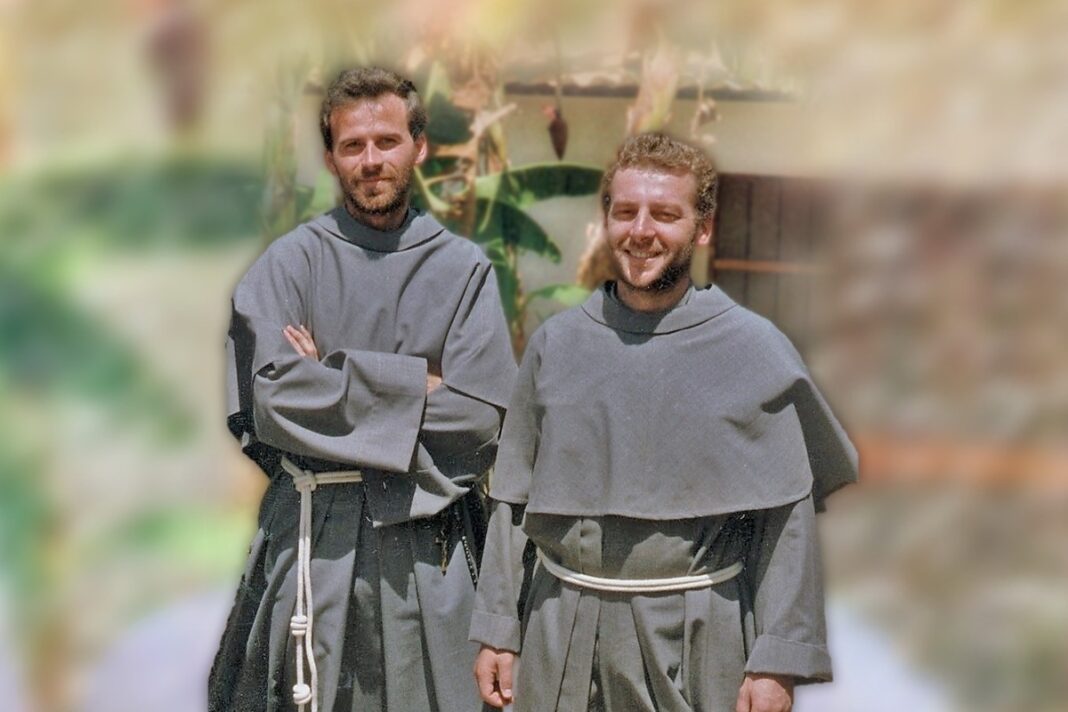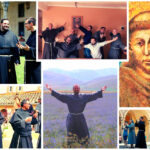Martyrdom for the Faith
Every believer, wishing to be faithful to the Gospel, may be called to the “supreme witness of martyrdom” (John Paul II, Veritatis splendor, 89). A missionary is even more likely to be called to give his life for Jesus, as confirmation of what the Good News proclaims. “Maryrdom…is a solemn proclamation and missionary commitment” (John Paul II, Veritatis splendor, 93). The Decree on Missionary Activity of the Second Vatican Council clearly highlights this truth: the missionary gazes at the Master and “in much patience, in long-suffering, in kindness, in unaffected love (cf. 2 Cor. 6:4ff.), he [gives testimony] to his Lord, if need be to the shedding of his blood” (Ad Gentes, 24).
The Greek language defines the word “testimony” using the term “martyria,” and in the Book of Revelation, St. John, is writing about martyrs when he says: “the souls of those who had been slaughtered because of the witness they bore to the word of God” (Rev 6:9). These words reveal a kind of daily reality that existed at the time of the “first proclamation of the Gospel.” Indeed, it is well known that “the Church of the first millennium was born of the blood of the martyrs: ‘Sanguis martyrum – semen christianorum’” (John Paul II, Tertio millennio adveniente, 37). Moreover, martyrdom is also defined as something that “has always accompanied and continues to accompany the life of the Church even today” (John Paul II, Veritatis splendor, 90).
Martyrdom was highly esteemed during the Middle Ages, especially during the Crusades. Yes, a life of daily mortification was also valued, but salvation was guaranteed to all those who gave their life for Christ through the shedding of blood.
Thus, it becomes clear that this fascination with suffering martyrdom in the East also had a particular influence on Francis. His principal aim, and that of his Franciscan missionaries, was to die for Jesus. Thomas of Celano defines this desire as reaching “the summit of perfection” (1 Cel 55 FF 417). The Earlier Rule already showed how a friar minor should behave in a situation that could undoubtedly arise in missionary work. The many New Testament quotations contained in the Rule speak directly about courage in the face of persecution, about renunciation and about fidelity to Christ, even unto death. “Wherever they may be, let all my brothers remember that they have given themselves and abandoned their bodies to the Lord Jesus Christ. For love of Him, they must make themselves vulnerable to their enemies, both visible and invisible, because the Lord says: ‘Whoever loses his life because of me will save it in eternal life’” (Earlier Rule 16:10-11 FF 45).
We see here that the desire for martyrdom was nothing new to St. Francis. For him, evangelizing and being a missionary, meant binding one’s life to the “Easter of the Lord.” Furthermore, Francis looked at the missions precisely through the lens of possible martyrdom, which, moreover, seemed to him more in line with the Gospel. In this regard, however, two points should be made. First, Francis did not intend martyrdom per se, but the possible consequences of the missionary work to convert unbelievers. Second, one should remember that this concept of martyrdom grew out of his reflection and from gazing upon Jesus on the cross, rather than an idea that came to him in the East, even though, according to his biographers, his desire to become a martyr is identified precisely with his intention to travel to the East. His way of thinking is confirmed in the Earlier Rule: “Our Lord Jesus Christ, Whose footprints we must follow, called His betrayer a friend and willingly offered Himself to His executioners. Our friends, therefore, are all those who unjustly inflict upon us distress and anguish, shame and injury, sorrow and punishment, martyrdom and death. We must love them greatly for we shall possess eternal life because of what they bring us” (Earlier Rule 22:2-4 FF 56).
We read that when Francis heard about the martyrdom of his first five missionaries, he said: “Now I can say with certainty that I have five lesser brothers” (Passio Sanctorum Martyrum fratrum Berardi, Petri, Adiuti, Accursii, Othonis in Marochio martyrizatorum, in Analecta Franciscana, III, 1897, 593). How much more eloquent then was John Paul II, when he affirmed that the martyrs are “indispensable to the journey of the Gospel” (John Paul II, Redemptoris missio, 45). Moreover, this “exceptional gift” (Lumen gentium, 42) makes martyrs “heralds and witnesses” in the true sense of the word (John Paul II, Redemptoris missio, 45).
Friar Dariusz MAZUREK
General Delegate for Missionary Animation
For more information on missions, see the Facebook page:
https://www.facebook.com/AnimazioneFrancescana/
See also the Instagram page for the General Secretariat for Missionary Animation:
https://www.instagram.com/sgam_ofmconv/














